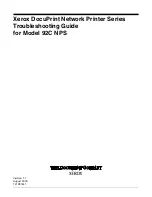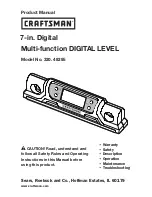
R3267 Series Spectrum Analyzer Operation Manual (Vol.1)
A.3 Glossary
A-11
Maximum Input Sensitivity
This is the maximum sensitivity of the spectrum analyzer for detecting signals. Sensitivity depends on the
resolution bandwidth and is affected by the noise generated by the spectrum analyzer itself. The maximum
input sensitivity is normally reflected as the average noise level in the minimum resolution bandwidth of the
spectrum analyzer.
Noise Sidebands
Spectrum analyzer efficiency is reduced by noise generated in the local oscillator and phase lock loop of the
analyzer. This noise will appear in the vicinity of the spectrum on the screen.
To compensate for this, the sideband of the analyzer is defined so that signals out of the sideband can be an-
alyzed in a certain range. This range is called the noise sideband.
The spectrum analyzer's noise sideband characteristics are shown in the following example.
Example: Suppose the noise level measured in the resolution bandwidth of 1 kHz is -70 dB at 20 kHz apart
from the carrier. The noise level is normally expressed by the energy contained in the 1 Hz band-
width (Figure A-5(b)). With a bandwidth of 1 Hz, the following applies: Since the value is -70 dB
when the bandwidth is 1 kHz, the signals within the 1 Hz bandwidth will be lower than this by
about 10 log 1 Hz/1 kHz [dB], or about 30 dB; consequently, it is expressed as -100 dB/Hz at 20
kHz apart from the carrier when the resolution bandwidth is 1 kHz.
Figure A-4 Noise Sidebands
Occupied Bandwidth
When information is transmitted through radio waves, the extension of the frequency spectrum is caused
along with the modulation. The occupied bandwidth is defined as the width of frequency spectrum that oc-
cupies 99% of all averaged electric power (see Figure A-5).








































